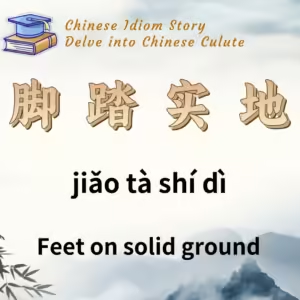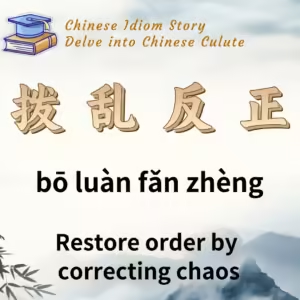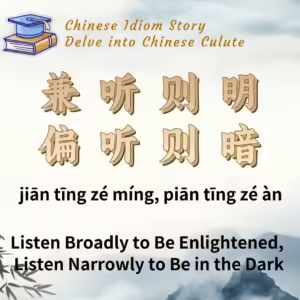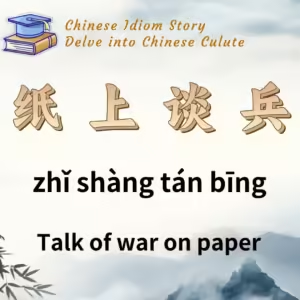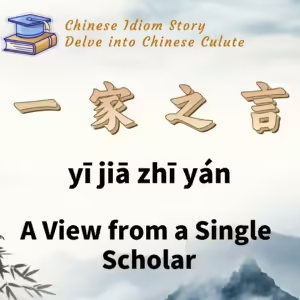
Chinese Idiom: 一家之言 (Yi Jia Zhi Yan)
English Translation: A View from a Single Scholar
pīn yīn: yī jiā zhī yán
Idiom Meaning: Refers to unique insights or theories from a particular scholar or school of thought; can also broadly refer to the views or theories of an individual or group. “家” signifies a scholarly school or tradition; “言” refers to theoretical viewpoints or writings.
Historical Source: “Letter to Ren Shaoqing.”
Idiom Story: In 91 BCE, the “Records of the Grand Historian” (“Shiji”), the first comprehensive historical text in China, was published. This monumental work, over 520,000 characters long, recorded more than 3,000 years of history from the legendary Yellow Emperor to the Han Emperor Wu. It reflects the political, economic, and cultural developments of China from ancient times to the Han Dynasty, setting a standard for later historical texts. The creation of such a vast work required immense knowledge and effort. Its author was the great historian Sima Qian.
Sima Qian, styled Zichang, was from Xiayang (modern-day Han City, Shaanxi). He lived during the reign of Emperor Wu of Han, and his father, Sima Tan, was a highly respected historian and held the position of Grand Historian. This position, often inherited, was responsible for astronomy, calendar calculations, and historical records. Sima Tan was well-versed in astronomy, history, and classical scholarship, and he harbored a lifelong ambition to write a comprehensive history similar to the “Spring and Autumn Annals” to fill the historical gap from Confucius’s time to Emperor Wu. From a young age, Sima Qian was groomed to continue his father’s legacy, mastering the contemporary clerical script and studying ancient texts.
At around 126 BCE, the twenty-year-old Sima Qian embarked on a journey across the country to realize his father’s wish. Starting from the capital, Chang’an, he traveled through Shaanxi, Henan, Hubei, and Changsha in Hunan, examining the legends of Yao and Shun, visiting the site where the patriotic poet Qu Yuan drowned, and exploring various historical and cultural sites across China. This extensive travel exposed him to diverse local customs, economic conditions, and historical sites, significantly aiding his work on the “Shiji.”
Upon returning, Sima Qian entered the Han court as an official and succeeded his father as Grand Historian at the age of thirty-eight. At forty-two, he began writing the “Shiji,” aiming to explore natural and societal changes and produce a comprehensive scholarly work.
However, at forty-eight, while the “Shiji” was still in progress, Sima Qian faced immense misfortune. General Li Ling, who had surrendered to the Xiongnu after a military defeat, sparked Emperor Wu’s anger. Sima Qian defended Li Ling, which led to his own severe punishment of castration. Despite this, Sima Qian remained resolute, driven by his lofty ideals of writing the “Shiji.” He persevered through immense physical and emotional suffering and completed the work by the age of fifty-five. The “Shiji” includes twelve “Annals,” ten “Tables,” eight “Books,” thirty “Houses,” and seventy “Biographies,” totaling 130 sections. The “Annals,” “Houses,” and “Biographies” are celebrated for their excellence in biographical literature and hold a significant place in Chinese historiography and literature. The renowned writer Lu Xun praised it as “a supreme work of history, a melodious ‘Li Sao’ without rhyme.”
From Sima Qian’s story of writing the “Shiji,” the idiom “A View from a Single Scholar” emerged to describe unique scholarly perspectives or theories.


